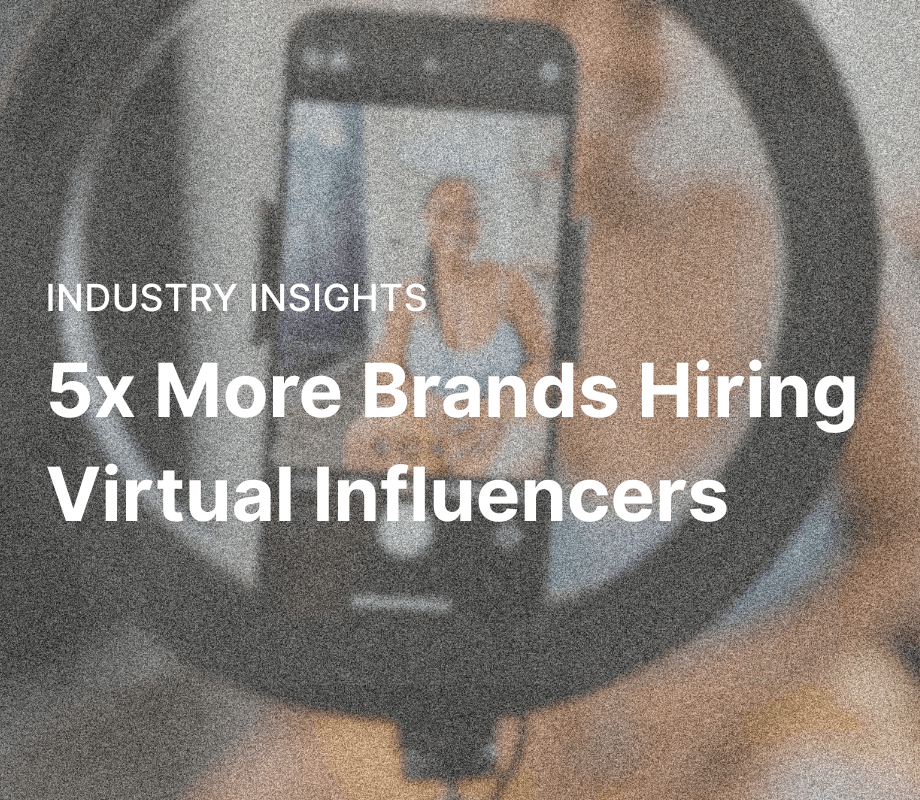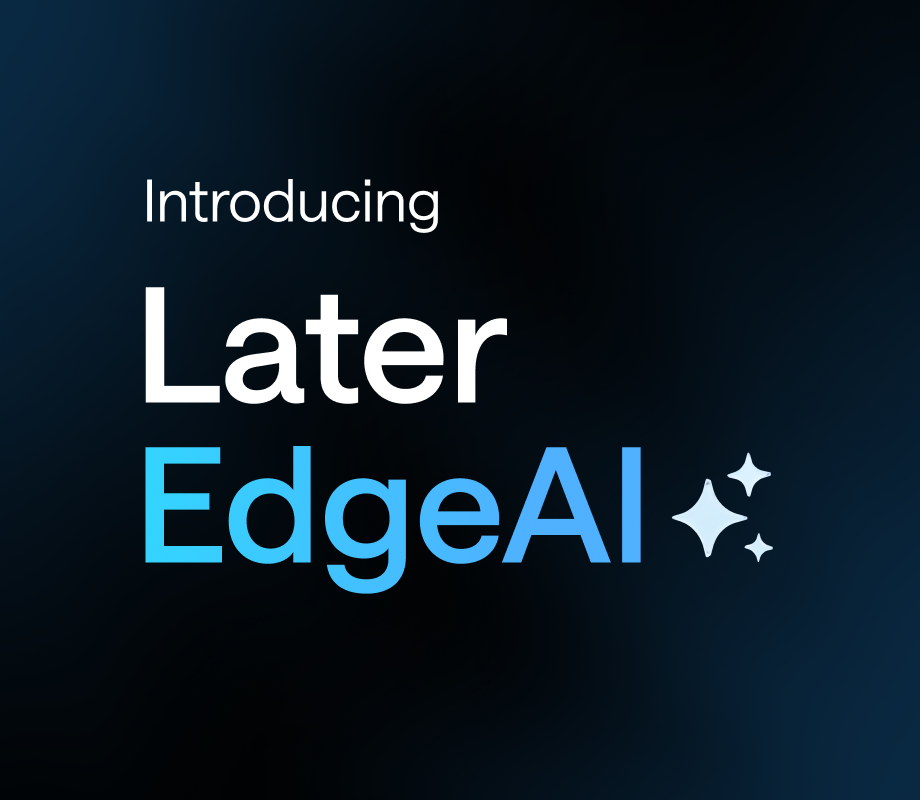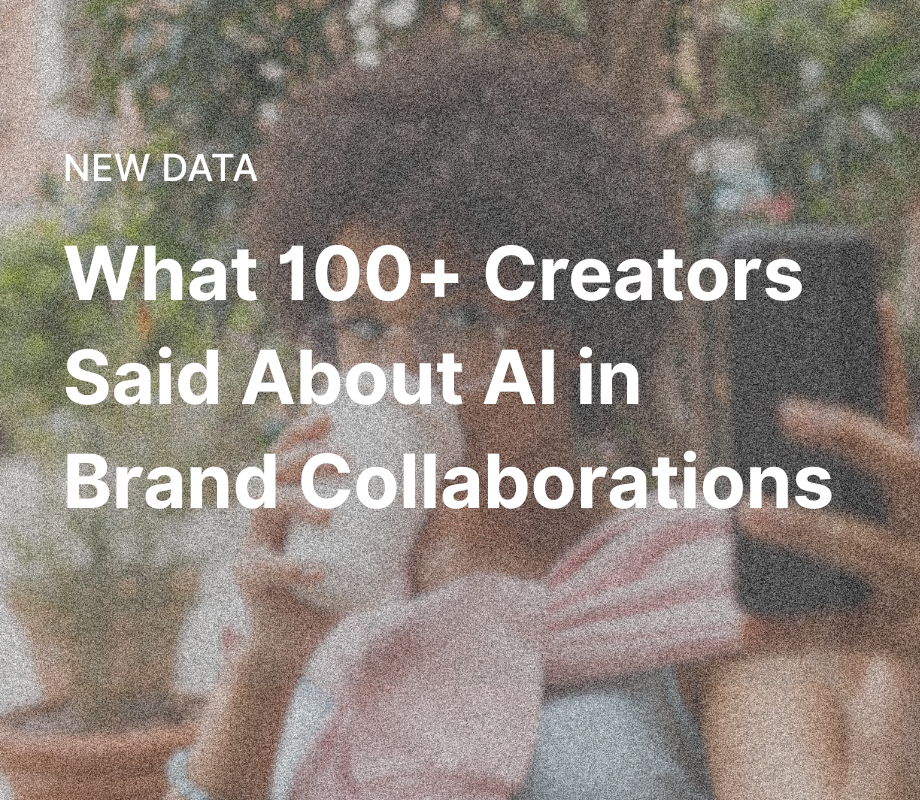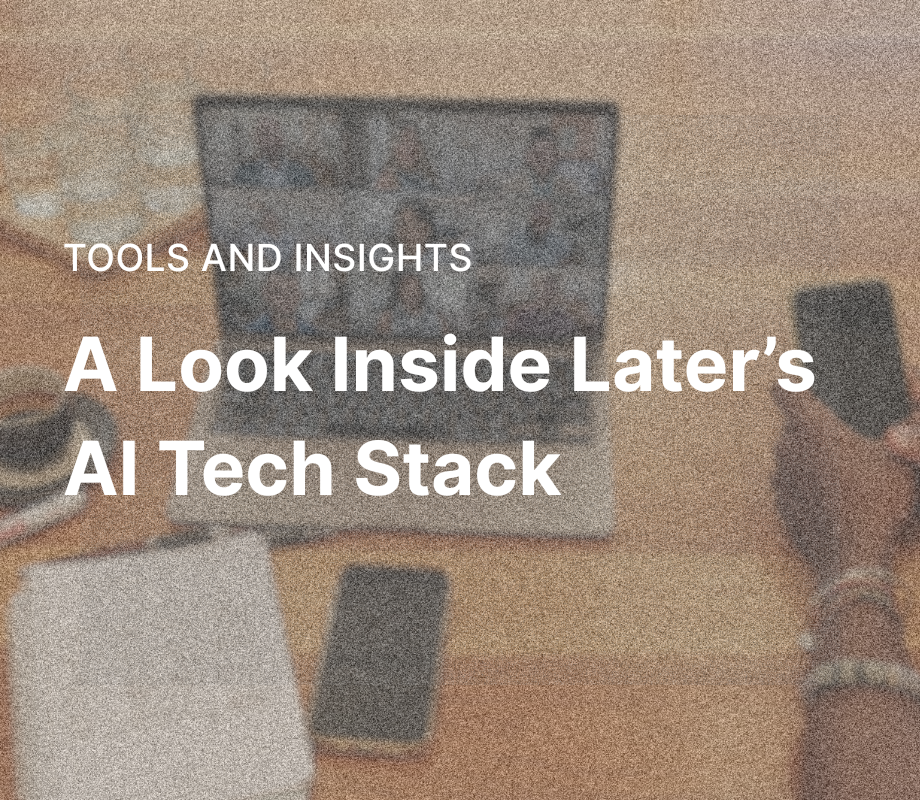TL;DR
Virtual influencer familiarity jumped from 16.5% to 68.4% in two years, with hiring increasing by 5x. This is the steepest adoption curve in influencer marketing to date.
Brand perceptions have shifted: only 10.4% now say virtual influencers don't align with their brand image, down from 43.3% in 2023. Virtual influencers are now seen as strategic assets rather than cost-saving tools.
77% of brands using virtual influencers report better results, but the strongest performance comes from using virtual influencers to complement human creators, not replace them. Virtual influencers handle scale and consistency while human creators drive authenticity and trust.
Brands face a decision: partner with existing virtual influencers for fast learning and lower risk, or build proprietary spokespeople for long-term control and IP value.
Table of Contents
- TL;DR
- Why virtual influencers crossed the legitimacy threshold
- The strategic fork facing CMOs
- The build/buy/partner decision framework
- Risks and benefits of partnering with virtual influencers
- Case study: Nike's virtual tribute to Serena Williams
- What this means for your creator partnerships
- For creators: What virtual influencers mean for your partnerships
- Your next move: Building the right influencer strategy
Join over 1 million marketers to get social news, trends, and tips right to your inbox!
Email AddressIn 2023, virtual influencers were barely on the radar, with just 16.5% of enterprise marketers familiar with them. Two years later, that number has jumped to 68.4%. Openness has climbed to 75%, hiring intent has tripled, and actual hiring has increased fivefold, from 4.1% to 21.5%.
Recent Later survey data* reveals that virtual influencers have moved from experimental to essential, with brands now treating them as strategic assets rather than creative experiments.
Why virtual influencers crossed the legitimacy threshold
The numbers are impressive, but perhaps the biggest shift is in brands’ perception of virtual influencers. Not long ago, CGI influencer campaigns felt too artificial to trust. They seemed experimental and risky for brands cautious about generative content.
In 2023, 43.3% of marketers said virtual influencers didn't align with their brand image. This year, that number dropped to 10.4%. That's a complete reframing of the conversation.
In just a couple of years, familiarity with virtual influencers has quadrupled, openness to work with them is up 2.5x, and the share of brands that've already hired one is up by 5x.
Tech maturity, audience familiarity with AI, and social media fatigue are all playing a role in driving the change in sentiment toward virtual influencers. Consumers are used to filters, avatars, and digital worlds that blur reality. Virtual influencers don't feel strange anymore. For brands, that normalization unlocked permission to experiment without worrying about alienating audiences.
The data backs this up. 77% of enterprise teams using AI campaigns report better results than with traditional methods. Early adopters have moved past experimentation to build hybrid teams that mix creative vision, 3D artistry, and data insights to make virtual influence repeatable. They're using their digital ambassadors everywhere: product drops, brand events, even customer support.
Picture a virtual spokesperson who drives engagement around the clock across six markets with no jet lag, no calendar conflicts, no last-minute cancellations. That's the kind of scalability that changes how brands think about content creation. Build the system once, and content creation costs drop while ROI compounds on autopilot.
The strategic fork facing CMOs
The challenge has shifted from whether brands should use virtual influencers to how they should structure them.
Brands face three paths: build a proprietary virtual spokesperson, partner with existing virtual talent, or test both approaches before committing.
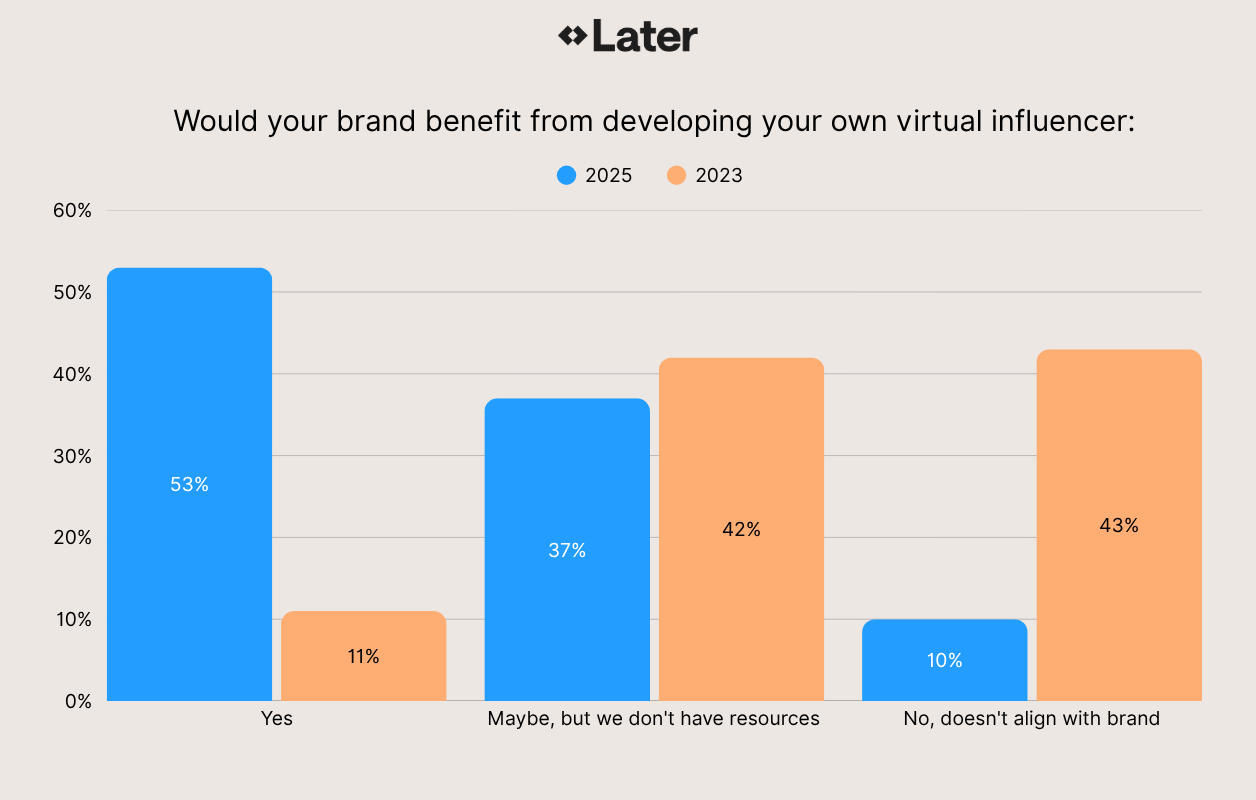
Fifty-three percent say building a virtual influencer would help their brand. That's a significant jump from just 11% two years ago. Yet 36% admit they don't have the resources to execute. The ambition is there, but the infrastructure might not be. That tension between curiosity and capacity is shaping what comes next in influencer marketing.
For smaller teams, partnerships offer a smart entry point with lower risk, faster learning, and plenty of data to build from. Established brands with bigger budgets tend to build their own, chasing control and long-term IP value. In both cases, the decision signals a brand's confidence in shaping the future of its marketing.
Perceptions of value have completely flipped, too. Two years ago, most marketers saw virtual influencers as money-savers. Nearly eight in ten thought they'd cost less than human influencers.
Today, that view has reversed. Over half now expect to pay more, and another third expect equal rates to creators. That's proof that a channel brands once doubted has evolved into a premium investment.
This shift tells us something important. Virtual influencers have evolved into strategic signals of innovation and creative control, making the cost comparison irrelevant.
So which path gets your brand there faster?
The build/buy/partner decision framework
Here's how to evaluate whether to partner with existing virtual influencers, build your own digital spokesperson, or combine both approaches.
When to partner with existing virtual influencers
Partnerships work best for brands in the exploration phase that want to prove the value of virtual influencers before investing in a full build.
Working with existing virtual influencers delivers reach, insight, and proof of concept without locking you into a full-scale build. It's the fastest route to execution. The average partnership campaign can go live in weeks, not months.
The investment profile is on par with human influencers. In fact, 85.8% of marketers now expect to pay similar or higher rates for virtual talent. Consistency drives credibility, and virtual influencers deliver on time, on brief, and on brand, every time. They give you total control of the message without the risk or volatility of human behavior.
That said, there are creative trade-offs. You're working within someone else's digital IP. The narrative flexibility is lower, and the influencer's aesthetic may not align perfectly with your brand.
Still, the data suggests it's a safe and proven entry point. With 58% of brands open to hiring virtual influencers and 22% already engaged, the learning curve is flattening fast. Partnerships offer exactly what every CMO needs: low risk, high insight, and measurable impact.
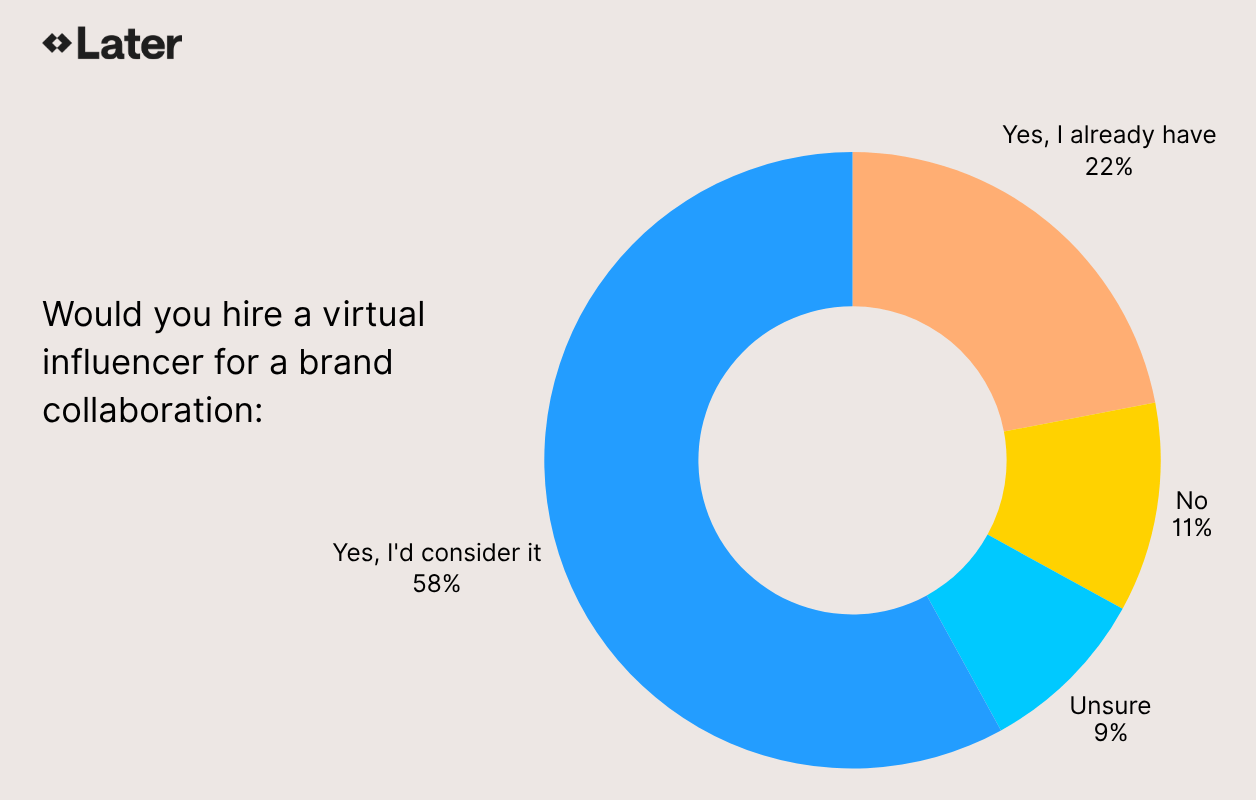
When to build your own virtual spokesperson
Building your own virtual influencer is a brand platform decision.
You're creating a long-term asset, not just hiring a face for a campaign. It grows with your brand and works across every channel, more like a mascot than a short-term partnership. It's closer to building a franchise than signing a one-off deal.
The trade-off can be worth it for many brands because you get full control, zero scandals, and a voice that stays perfectly on-brand every time it speaks. Show up consistently with your virtual influencer, and they'll transform from "that campaign character" to part of your brand's DNA.
That’s not to say that building your own virtual influencer is plug-and-play. You'll need designers, technologists, writers, data analysts, and a team that knows their way around animation, voice, and storytelling. Community management matters too as the human side of the digital story still drives everything. Plus, the process of developing and launching a virtual influencer would most likely take 6 to 12 months.
It's a significant investment, but the payoff can be substantial. Those that go the virtual influencer route will own a reusable digital asset that doesn't need renegotiation, doesn't take sick days, and doesn't age out of your target demographic.
Risks and benefits of partnering with virtual influencers
As brands invest in virtual influencers, they're weighing measurable benefits against legitimate concerns about authenticity and emotional impact.
Creative freedom ranks as the top perceived benefit at 45%, followed by high engagement rates (41%) and innovation/uniqueness (39%).
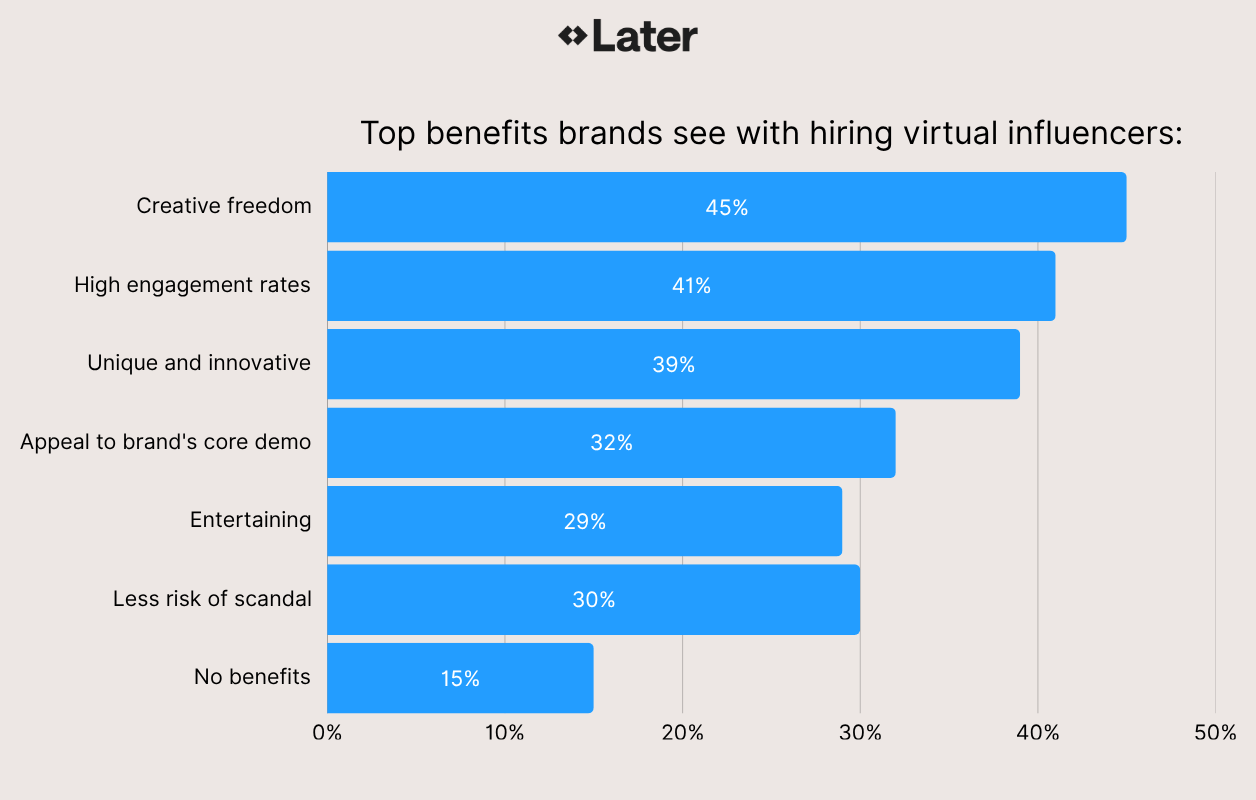
The shift in motivation comes with real confidence. According to our data, 90% of marketers now believe AI will bring long-term value to marketing, with nearly 60% saying they're very confident in that future.
Concerns about use of AI in content creation haven't disappeared entirely. Authenticity (50.3%), intellectual property (41.8%), and emotional impact (42.3%) still make the list, but they're declining as brands see proof of performance.
The key is designing virtual experiences that deliver on creative innovation while maintaining authentic emotional resonance.
Case study: Nike's virtual tribute to Serena Williams
Nike knows how to use AI to create cultural moments. For the brand's 50th anniversary and Serena Williams' retirement, Nike partnered with AKQA to create something unprecedented: a virtual match between Serena at the peak of her career and Serena in her final competitive years.
Using AI and machine learning, the team rebuilt Serena's game from two eras, including her first Grand Slam in 1999 and her Australian Open win in 2017. Every movement mattered: the snap of her serve, the split-second footwork, the instinctive read of a rally. All of it was captured in data and reborn on screen.
The virtual match streamed on YouTube, racking up 1.7 million viewers and sending Nike's engagement soaring more than 1,000 percent above its norm. Beyond the numbers, the campaign proved that AI can be both efficient and emotive.
For Nike, the takeaway was clear: innovation fuels connection. By fusing machine learning with human legacy, the brand redefined what storytelling can look like in the age of AI.
This kind of campaign shows that virtual influence isn't happening in a vacuum. The same AI tools now power everything from copywriting to customer service. Most AI-led campaigns outperform traditional methods, but the real opportunity is hybrid: humans and virtual influencers working side by side.
What this means for your creator partnerships
Virtual influencers work best when they complement human creators, not replace them.
The brands seeing the strongest results use virtual influencers for specific use cases like product demonstrations, evergreen educational content, or maintaining brand presence during off-peak periods, but still rely on human creators for authentic testimonials, community-building, cultural relevance, and the emotional connection that translates to long-term brand loyalty.
As you think about virtual influencers in your marketing strategy, here are a few things worth considering:
Lead with human creators, supplement with virtual influencers
Your creator partnerships should remain the foundation of your influencer marketing strategy. Human creators drive authenticity, trust, and emotional connection. Virtual influencers can handle supporting roles like maintaining consistent brand messaging across time zones, demonstrating product features in controlled environments, or scaling content production for always-on campaigns. Think of virtual influencers as a tool that amplifies your human creator partnerships, not as a replacement for them.
Tools like Later EdgeAI, trained on data from 16 million creators and $2 billion in verified influencer-driven purchases, help brands identify the right human creators and predict campaign performance before spending a dollar, turning influencer marketing into a dependable growth channel alongside any virtual influence strategies.
Protect the authenticity that makes influencer marketing work
The reason influencer marketing delivers results is trust. Audiences trust recommendations from people they follow because those relationships feel genuine. Virtual influencers don't have that foundation. They can support brand awareness and education, but they shouldn't be positioned as the primary voice in campaigns where authenticity drives conversions. Reserve your most important partnership opportunities and campaign moments for human creators who have earned audience trust.
Use virtual influencers strategically, not universally
If you're exploring virtual influencers, start by identifying specific use cases where consistency and control matter more than authentic personal connection. Product tutorials, FAQ content, or seasonal campaigns with high content volume needs can benefit from virtual influencers. Launch campaigns, brand repositioning, community engagement, and anything requiring cultural sensitivity or emotional resonance should stay with human creators.
Invest in your human creator relationships
The rise of virtual influencers makes your relationships with talented human creators even more valuable. These partnerships deliver what technology cannot: genuine advocacy, creative collaboration that evolves based on audience feedback, and the cultural credibility that comes from real people championing your brand. As you explore new technologies, make sure you're also deepening your commitments to the creators who drive authentic connection with your audience.
For creators: What virtual influencers mean for your partnerships
If you're a creator wondering how virtual influencers affect your work, here's the reality: they're not replacing you. They're changing the conversation in ways that actually create more opportunities for creators who adapt.
87% of creators expect AI to become essential to influencer work within two years. Three-quarters are already using AI for brainstorming and ideation, and 58% leverage it for copywriting and caption generation. These creators report measurable improvements: 87% see higher content quality with AI assistance, and 75% report better campaign performance.
Here's what matters: brands exploring virtual influencers are the same brands getting comfortable with AI across their marketing. They're not looking to replace human creators. They're looking for creators who understand how to work in this evolving landscape.
The creators positioned to thrive are those who stay curious about how brands are using virtual influencers, understand the trade-offs, and use that knowledge to highlight what makes their partnerships irreplaceable, while also demonstrating comfort with AI tools in their content creation process. If you’re one of the 76% of creators using AI to improve your efficiency and content quality, brands will recognize you as a strategic partner who understands the future of content creation.
The authenticity concerns brands have about virtual influencers actually strengthen your position. When only 0.8% of audiences react negatively to creators disclosing AI use, and 87% of creators using AI report higher quality content, it's clear that transparency about your process builds trust rather than diminishing it.
Your next move: Building the right influencer strategy
Virtual influencers have moved from experimental to mainstream, with adoption increasing by 5x in just two years. The brands moving now will define how virtual and human creators work together, while those waiting risk following a playbook written by competitors.
Ready to explore how virtual influencers fit into your influencer marketing strategy? Book a call to learn how Later Influence can help you optimize creator partnerships.
*Methodology: Later survey of 189 CPG brand marketers and 120 creators conducted in September 2025.
